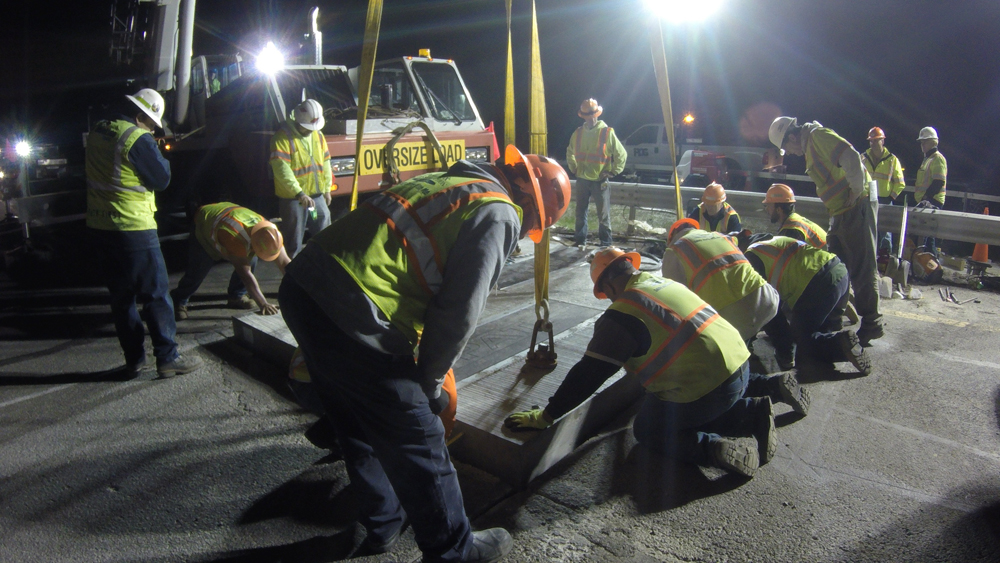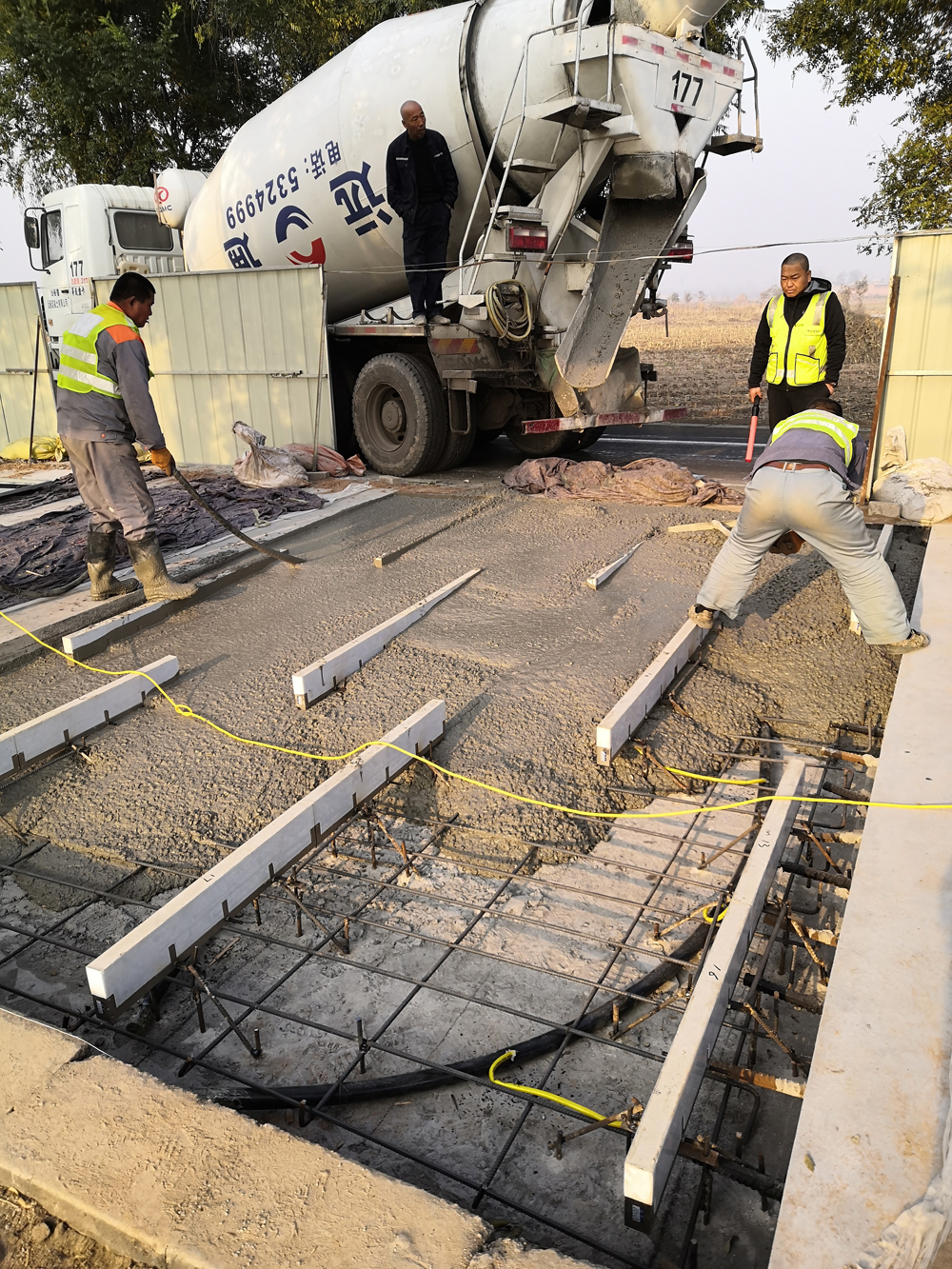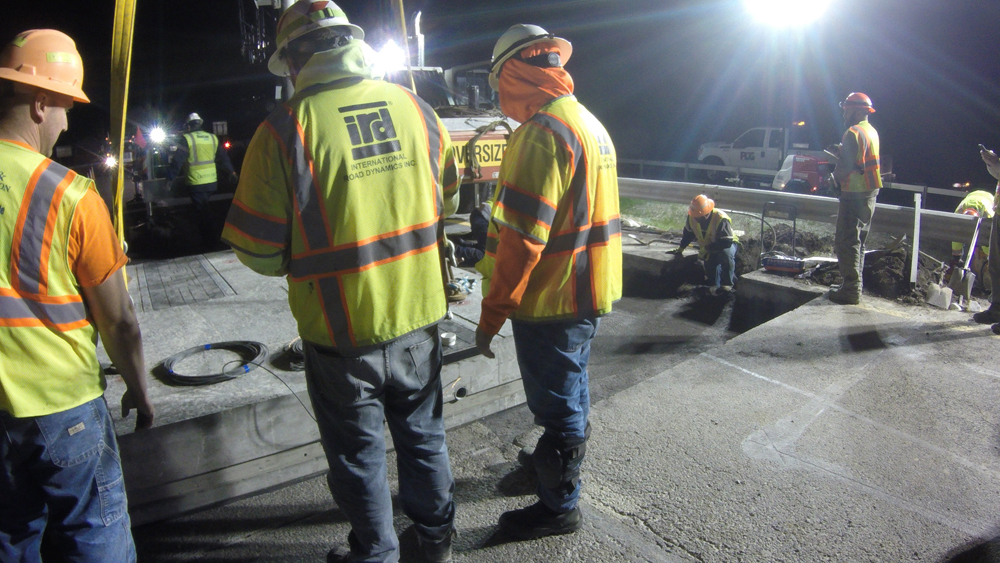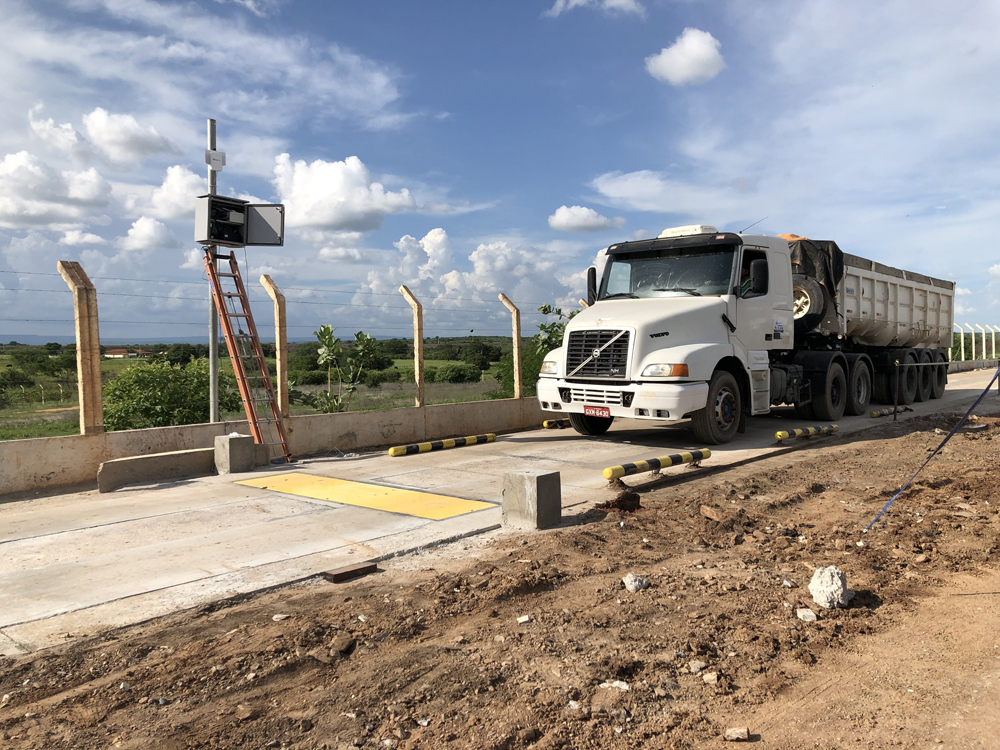
When budgets are squeezed, something has to give. The condition of road surfaces all over the world is deteriorating as money for government and local authority repair and maintenance programmes comes under sustained pressure.
So how does this situation – bumps, cracks, holes, sustained wear and tear and so on – affect the finely-calibrated technology on which WiM operations rely?
“From a practical standpoint, poor road surface conditions negatively impact any WiM site operations,” acknowledges Jon Arnold, market specialist at Intercomp. “Road conditions can cause vehicle dynamics which affect WiM measurements by any scale or sensor.”

This deterioration will affect WiM operation in two major ways, says VanJee WiM CTO Wang Ping: first, by significantly reducing the accuracy of weight measurement; and second, by increasing maintenance costs and reducing a sensor’s life span. If a WiM system has trouble providing valid weight data, it may mean that “the weighing error is too large to perform the tolling purpose or enforcement purpose for road authorities”. Surface damage will decrease the lifespan of a bar sensor, creating a vicious circle. “The bar sensor will be more easily damaged due to the truck pressing on extruded sensors,” Wang points out. “This will increase WiM users’ maintenance costs dramatically.”
Meaningful data
In an ideal world, things would not be this way, says Neil Klassen, vice president, engineering research & development at IRD. “The deterioration of a particular agency’s road network should not affect WiM operations,” he says. “In order to provide meaningful data, the section of road where the WiM is installed must be sound. It is, however, realistic to expect degradation of pavement despite the utmost care and efforts that go into roadway construction.”
Florian Weiss, CEO of Traffic Data Systems, suggests that this is why WiM can help. “Based on estimations and traffic counters, road operators only get a rough idea about forces that lead into the pavement of a road,” he points out. “A 40-tonne truck causes the same damage as 40,000 normal cars. If trucks exceed the weight limitations, forces are increasing exponentially.”
Therefore it is important to bear in mind the mitigating effects of WiM operations on road damage, thinks Libor Sušil, marketing manager at Cross Zlín. Among the raisons d’etre of the WiM industry is, of course, the ability to detect vehicles which are running overweight and enabling them to be fined. Therefore the deterrent aspect is a major factor. “The result is the reduction of such overloaded trucks on the roads, which is very important in terms of road and motorway wear,” Sušil says.
Tomas Pospisek, global market development manager for road & traffic at Kistler, agrees. “We believe that an advanced WiM system can protect the road and ultimately help to save repair and maintenance costs,” he insists. Vehicle weight is a significant contributor to highway surface damage. “WiM enforcement applications in the form of direct penalisation, or pre-selection systems, help to penalise and reduce the number of vehicles which really create the damage on the road. Constant traffic load monitoring on statistical WiM systems helps to improve planning of maintenance cycles and therefore allows sustainable allocation of repair and maintenance budgets. Demand for accurate traffic flow information that includes weight of vehicles grows as the road operators realise that the return on investment in high-speed WIM systems can be quite short.”
Numerous solutions
Establishing that damage is taking place on a roadway is one thing – doing something about it is quite another. But fortunately, there are numerous solutions available.
 “Prevention of pavement degradation at the WiM sites is critical,” explains IRD’s Klassen. “The first consideration is following WiM standards that provide guidelines for appropriate selection and preparation of sites prior to WiM sensor installation. As COST323 guidelines suggest, the road is the support for the sensor - and therefore critical to obtaining accurate measurements.”
“Prevention of pavement degradation at the WiM sites is critical,” explains IRD’s Klassen. “The first consideration is following WiM standards that provide guidelines for appropriate selection and preparation of sites prior to WiM sensor installation. As COST323 guidelines suggest, the road is the support for the sensor - and therefore critical to obtaining accurate measurements.”
Other considerations include surface smoothness and pavement structure, whether flexible or rigid, he continues. “Provided there is a well-prepared and maintained 90m section of pavement at the WiM site, and transitions to the rest of the road are kept up, the WiM should continue to perform well. Our high-accuracy, high-speed WiM systems use IRD-PAT Bending Plates or Single Load Cell scales.” IRD recommends specially-prepared rigid pavements, either precast or cast in place, to create long-lasting and maintainable installations.”
High-speed WiM is used for pre-selection of overloaded vehicles and subsequent direct enforcement. That being the case, Cross Zlín’s Sušil suggests that the problem of overloaded vehicles damaging roads needs to be addressed “not just in one place, but to create a whole network of measuring stations to protect the damage in the regions”.
“After 20 years of using high-speed WiM in the world, it is clear that reliable weight information leads to better road management,” Pospisek concurs. “Not mentioning the quick wins of direct enforcement – all the countries that have opted for this way recorded a dramatic increase of cases of overloaded heavy vehicles that have been captured and penalised. And, most important, within few months the overloaded traffic started to decline.” WiM direct enforcement solutions work, in other words.
“In all countries where it was implemented, we could observe that more authorities see WiM as a preventive measure,” he continues. “And we should not forget fair payments for road usage – with the newest technologies like the KiTraffic Digital WiM system it will be possible to step out of the conventional thinking and employ pay-per-tonne scenarios.”
System benefits
Crucial in all this is to explain the benefits of a WiM system to end users and road operators, “even though it is a complex topic and not always straightforward or easy to calculate” adds Pospisek.
“Once there is realisation that overweight large vehicles are a major cause of roadway degradation, actions can be taken that match a locality’s strategy to address the issues,” says Arnold at Intercomp. “Active weight enforcement and penalties can generate immediate revenue, but a mid-term and long-term approach must be taken to ensure damage caused by overloaded vehicles doesn’t exceed repair and maintenance budgets.”

When it comes to the specifics of achieving this, Roy Czinku, IRD’s vice president of ITS solutions & maintenance services, explains: “Depending on certain site requirements including weather conditions at the site, IRD also integrates WiM systems with several strip sensor technologies. Typically, additional strip sensors are needed to meet similar accuracies as derived from scale sensors.”
Regardless of the choice of WiM sensor, IRD will be launching its next generation of WIM system operations, which includes modulation and adaptive processing of the WiM sensor signal, “while taking into consideration parameters that vary from site to site depending on the external environment”, Czinku adds.
VanJee has three major methods to overcome road surface deterioration. These are: hard concrete pavements; the bar sensor’s 5cm grindable layer; and the interleave layout of the bar sensor itself. “Firstly, VanJee recommends to install bar sensors in a hard concrete pavement with length 16m to guarantee the stability of WiM measurement and road quality,” says Wang.
“Secondly, VanJee designs a 5cm grindable layer for the bar sensor. The WiM user can grind the sensor surface to achieve the perfect same level between sensor and road even though there is deformation of the road. Thirdly, VanJee designed the specific interleave layout of the bar sensor to reduce weighing errors caused by vehicle vibration. This allows the system to extrapolate the entire vibration period and compensate the effects on the weighing result.”
The solutions offered by each company come from long experience of dealing with all types of road conditions. “A customer’s budget affects any business, and we’ve seen clients in different geographies address this in different ways,” says Arnold.
Funding shortfall
There are situations where, for one reason or another, clients have not been able to select and prepare an optimal site for their WiM, adds Czinku. “It is also possible that site maintenance has fallen off due to a shortfall in funding for the customer’s data collection or pre-screening programme,” he continues. “Sometimes WiM sensors that work well in flexible pavements are left in place with the expectation that they will be replaced when the road is resurfaced. However, the worst situations where the roadway surface degrades in the vicinity of the WiM sensors require decommissioning of WiM operations for a period of time - until the pavement is replaced. This doesn’t often happen as our customers are increasingly committing to maintenance contracts so that their WiM sites stay in good condition, even if other parts of their road networks may experience deterioration.”
Cross Zlín has installed several scales in the Czech Republic, both on motorways and parallel roads overseen by local government, “so that there is no easy way to go around the motorways”, says Sušil. “A special topic is the technical condition of the scale, which is not easy to keep, as the correct operating is influenced not only by the climatic conditions, but also by the condition of the road before the scale is installed.”

VanJee has encountered the problem of road deterioration “seriously in many WiM projects”, reports Wang. In 2015, VanJee installed the bar sensor directly on asphalt pavements in a WiM direct enforcement project in Beijing, China. “There were too many overloaded vehicles, which caused rutting and deformation of the road. As a result, the sensor’s weighing error was large. Additionally, road deterioration and truck press damaged the bar sensor within one year.”
Sometimes, unfortunately, the worst happens. “Obviously the investments into any ITS technology on the road is linked to overall budgetary situation in a particular country,” says Kistler’s Pospisek. “Sadly, sometimes a tragedy – like a bridge collapse - must happen before the government starts to focus on the topic.”
To counter this, he suggests: “Bringing concrete evidence of how a WiM system helped to prevent overloading and road or bridge damage is the best way to explain the benefits of WiM and key to being part of investment planning.”
Critical information
Many authorities are aware of this. Since WiM sensors produce critical information about the road network that is valuable to protect and optimise road infrastructure, customers understand that a little work on WiM sites themselves has benefits for the road as a whole, thinks Rish Malhotra, COO of IRD: “For the most part, our clients are well aware of the importance of maintaining what is, in essence, a precision measurement instrument.”
To conclude, Jon Arnold at Intercomp makes the case straightforwardly. “WiM sites must first be recognised as a contributor to alleviating budget constraints, not simply as a cost centre,” he insists. “Identifying overweight vehicles can generate revenue streams through penalties, as long as they are enforced. Penalties - if large enough - should compel compliance from vehicle operators, lessening damage to the road and decreasing repair and maintenance costs over time.”
Florian Weiss of Traffic Data Systems puts it this way: “If costs for a four-lane WiM system with cameras are estimated between €300,000-500,000, customers consider this to be very expensive. In comparison to a new highway or bridge, the reconstruction of a damaged highway or bridge and the economic loss due to delays and traffic jams, the costs for WiM are negligible - because WiM supplies detailed information regarding the weight of each vehicle. Customers have to see WiM as a unique data source and not as some electronics that needs to be maintained.”











